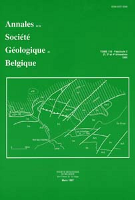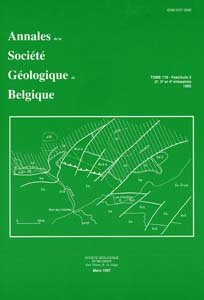- Accueil
- Volume 113 (1990)
- Fascicule 2
- Aspects of the structural and paleogeothermal evolution of the Rhenish Massif
Visualisation(s): 740 (0 ULiège)
Téléchargement(s): 1166 (1 ULiège)
Aspects of the structural and paleogeothermal evolution of the Rhenish Massif

Abstract
The correlation of data on organic rank with thermally activated deformation microfabrics of frequent minerals (quartz, calcite, sheet silicates) can yield a detailed deformation-temperature history. This includes the temporal relationship of the metamorphic peak with respect to deformation, the onset and relative duration of thrust motion, the qualitative amount of thrust displacement, and the time interval of crustal stacking by thrusting, as well as of subsequent erosion.
Application of this analytical tool to published rank data from the Rhenish Massif and integration with the other fabric data mentioned show three, possibly more, regions with distinctly differing relations. Parts of the Northern Massif reach peak metamorphism during folding and cleavage formation while isolines of same organic rank are equally folded - pointing to essentially prekinematic coalification with lacking equilibration of rank to deformation conditions due to the short time available. Therefore, paleogeothermal gradients and the amount of the total sedimentary cover can be calculated from rank gradients.
In contrast, the activity of the steep to shallow dipping thrusts of the middle and southern Massif succeeds the peak of thermal metamorphism and proceeds under retrogressive conditions. This may lead to inverse rank gradients beneath the thrusts which, however, are probably not parallelled by inverse paleogeothermal gradients during thrust motion. This apparently contradictory aspect is controlled by the relative rates of thrusting, of the related motion of isothermes through the stratigraphic pile, and by the equilibration rate of the coalification reactions. The southernmost thrust system (Taunuskamm-Soonwald-thrust) moreover shows evidence of very rapid crustal stacking connected with heating of the imbricated nappe body and a following phase of rapid denudation.
Pour citer cet article
A propos de : Onno Oncken
Geologisch-Paläontologisches Institut, J.W. Goethe-Universität, Senckenberg-Anlage 32-34, 6000 Frankfurt 1, Federal Republic of Germany.






